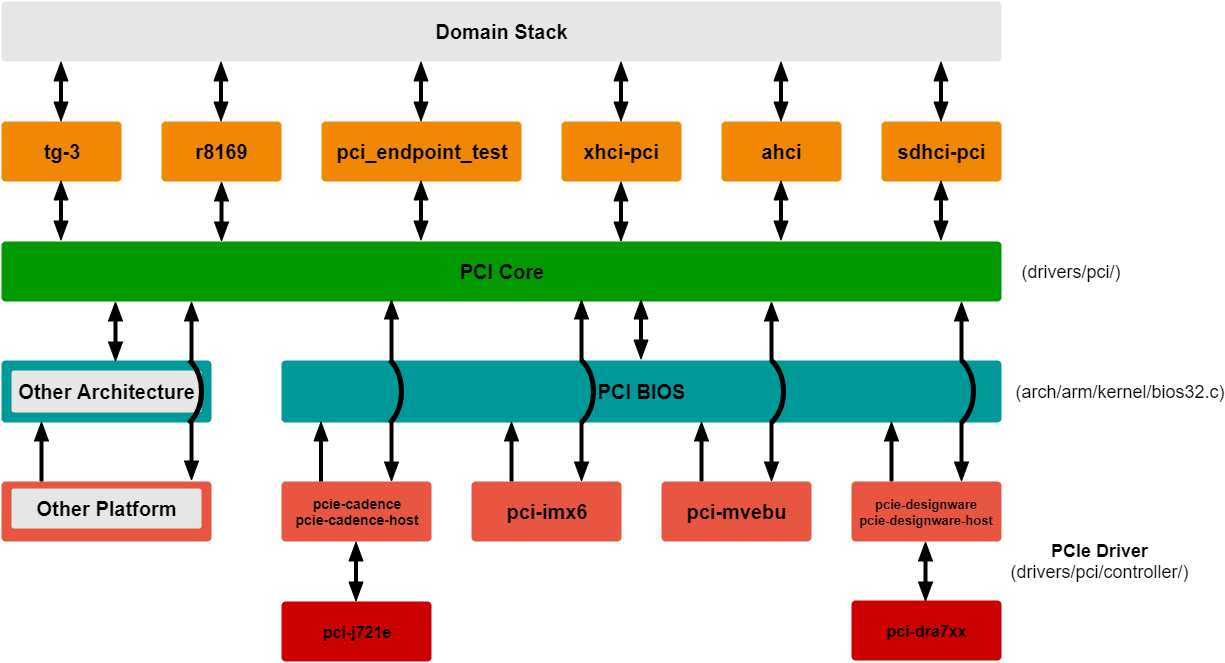3.2.2.9. PCIe Root Complex¶
Introduction
The PCI Express (PCIe) module is a multi-lane I/O interconnect providing low pin count, high reliability, and high-speed data transfer at rates of up to 8.0 Gbps per lane per direction. It is a 3rd Generation I/O Interconnect technology succeeding ISA and PCI bus that is designed to be used as a general-purpose serial I/O interconnect in multiple market segments, including desktop, mobile, server, storage and embedded communications.
RC Software Architecture
Following is the software architecture for Root Complex mode:

Following is a brief explanation of layers shown in the diagram:
- There are different drivers for the connected PCIe devices like pci_endpoint_test, tg-3, r8169, xhci-pci, ahci, etc. It could be vendor-specific like most of the ethernet cards (tg3, r8169) or class-specific like xhci-pci and ahci. Each of these drivers will also interact with it’s own domain-specific stack. For example, tg3 will interface with network stack, and xhci-pci will interface with USB stack.
- The PCI core layer scans the PCIe bus to identify and detect any PCIe devices. It also binds the driver from the layer above, for the PCIe device, based on vendorid, deviceid and class.
- The PCI BIOS layer handles resource management. For example, allocation of memory resources for BARs.
- The bottom-most layer consists of the PCIe platform drivers like pcie-cadence, pcie-designware, etc. pci-j721e and pci-dra7xx are TI’s wrappers over these drivers. They configure platform-specific controllers and perform actual register writes.
